Little Odessa Blu-ray Movie
HomeLittle Odessa Blu-ray Movie 
Metropolitan | 1994 | 98 min | Rated 12 Interdit aux moins de 12 ans | Jan 03, 2023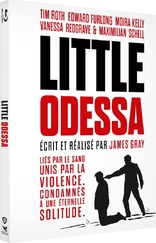
Movie rating
6.9 | / 10 |
Blu-ray rating
| Users | 0.0 | |
| Reviewer | 3.5 | |
| Overall | 3.5 |
Overview
Little Odessa (1994)
A somber portrait of organized crime and family trauma, Little Odessa centers on the trouble caused when hit man Joshua Shapira returns to his old neighborhood of Brighton Beach, Brooklyn.
Starring: Tim Roth, Edward Furlong, Moira Kelly, Vanessa Redgrave, Paul Guilfoyle (II)Director: James Gray (I)
| Thriller | Uncertain |
| Crime | Uncertain |
| Drama | Uncertain |
Specifications
Video
Video codec: MPEG-4 AVC
Video resolution: 1080p
Aspect ratio: 2.35:1
Original aspect ratio: 2.39:1
Audio
French: DTS-HD Master Audio 5.1 (48kHz, 16-bit)
English: DTS-HD Master Audio 5.1 (48kHz, 16-bit)
Subtitles
French
Discs
Blu-ray Disc
Single disc (1 BD)
Playback
Region B (A, C untested)
Review
Rating summary
| Movie | 4.0 | |
| Video | 4.0 | |
| Audio | 4.0 | |
| Extras | 1.5 | |
| Overall | 3.5 |
Little Odessa Blu-ray Movie Review
Reviewed by Dr. Stephen Larson January 20, 2023Winner of two awards at the 1994 Venice Film Festival, James Gray's maiden feature LITTLE ODESSA has arrived courtesy of French label Metropolitan Film & Video. The BD-50 comes with an exclusive interview with director Gray. The disc also comes with the original English sound track (with optional French subtitles) and an alternate French language dub. Region "B" locked.
Little Odessa (1994) is a challenging film to watch because the series of shots that make up a given scene seldom reveal the full motives of the characters or give the audience a complete snapshot of everything going on. Its narrative is far less dependent on plot than it is on the setting's atmosphere or the mood of the characters. It isn't a movie that "explains" much about the story events either. Writer/director James Gray deliberately made these formal and stylistic choices. He studied still photographs and paintings as he prepped the picture. They formed the basis for establishing and master shots as well as various "poses" the characters make. This isn't to say the film isn't cinematic or lacks movement. It demonstrates both of those qualities but is still characterized by a certain stasis. For instance, Gray holds the camera while individuals in a group talk but since the lighting is so dim, it isn't immediately apparent who's speaking. Gray also employs a long take through an extreme long shot of two characters conversing while walking to a bench in Brighton Beach. Their figures are distant and their backs are to the camera. Gray accentuates their words on the front of the sound track. Gray uses some of these uncommon storytelling techniques because he's working in a long-told genre: the crime film. Several traces of Coppola, Scorsese, and Tarantino are evident but Gray imprints his own stamp on this well-worn material.
Little Odessa begins in an almost sleep state: a black screen accompanied by an acapella chorus. A long fade-in follows to the eye of 23-year-old Joshua Shapira (Tim Roth). Joshua walks across the street and approaches a man seated on a city bench, who he shoots point blank. The murderer inserts coins in a pay phone and tells his boss, "It's done." But the boss has another sinister assignment for Joshua: a contract kill of an Iranian jeweler who owes outstanding debts to the mob. Joshua is a member of the organizatsiya, the Russian mafia in New York. He was exiled from Little Odessa, a neighborhood comprised of Russian-Jewish émigrés, because he killed the son of a local mobster. Joshua has also been ostracized from his home in Brighton Beach because his father, Arkady Shapira (Maximilian Schell), wanted nothing more to do with his criminal ways. But Joshua's 15-year-old brother, Reuben (Edward Furlong), idolizes his older sibling and promptly follows up on a tip from gang member Sasha (David Vadim) on where to find him. Joshua and Reuben's mother, Irina (Vanessa Redgrave), is bedridden due to a brain tumor. (James Gray's own mother had the same condition.) It seems that Joshua had a better relationship with her than his father so he wants to pay his respects. When the family is reunited, a small quarrel ensues that will have later have grave repercussions.
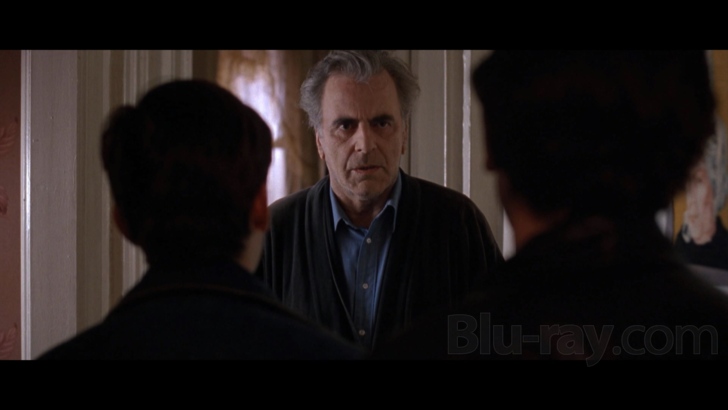
Father confronts his two sons.
Though Arkady is well-educated in music and literature, he hasn't been able to convert his talents into the American Dream. He operates a newsstand in Brooklyn with Reuben's occasional assistance. Unbeknown to father, Reuben has been a truant, skipping school for two months to ride his bike around town. Reuben is taciturn like his older brother but doesn't seem to have the same icy mean streak. Joshua also reunites with 22-year-old Alla (Moira Kelly), a former girlfriend. It's the process of watching if and how Joshua could corrupt and affect Reuben that Little Odessa is at its most gripping.
Gray's directorial debut received a mixed reception when it was shown in the US throughout the summer and fall of 1995. Its biggest detractors complained that the film's characters received insufficient background and lacked development. They also expressed bemusement over Gray's aesthetic design, which they found too arty and inaccessible. In the other camp, the movie's supporters gave it various props. In an eloquent review, Stanley Crouch of the Daily (NY) News heralded it as "one of those periodic gems that achieves importance by looking at our present social problems in such a special way that we are allowed to understand the long history of urban crime and urban turmoil." Several others strongly commended the performances. Eleanor O'Sullivan of the Asbury Park Press (Neptune, NJ) lauded two especially: "[Vanessa] Redgrave’s magnetic work here is reminiscent of her extraordinary performance in Howards End; she gave that movie its heart, and she does the same here. Roth’s performance has the edgy, volatile quality of James Cagney’s work in Warner Bros.’ ’30s’ crime melodramas." The Baltimore Sun's Stephen Wigler praised it as a "brilliantly acted movie. Roth is an exceptionally versatile actor, but his Josh may surpass previous achievements. The British actor’s accent, for example, is perfect Russian-inflected Jewish Brooklynese. And his tortured eyes, speech and physical expressions convey the anguish of a man who has repressed, but not erased, his essential decency....Little Odessa may depress you, but it is so superbly executed that’s it’s likely to leave you exhilarated as well." The Sacramento Bee's Joe Baltake extolled Furlong for possessing "an absolutely commanding screen presence and a sullen, disaffected style that is largely responsible for the pervasive moodiness of the piece." The Santa Fe New Mexican's Brent Kliewer placed the Terminator 2 star in an elite class of young actors: "Kudos, too, for Furlong, who, along with Leonardo DiCaprio, is the most talented young actor in American movies."
Little Odessa Blu-ray Movie, Video Quality 
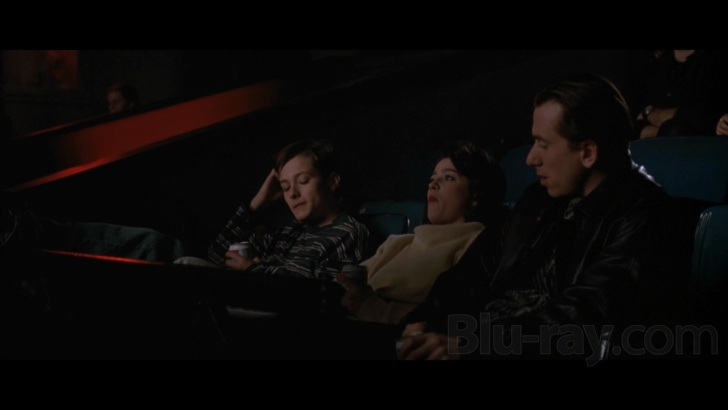
Metropolitan Film & Video's January release of Little Odessa contains a slim and shiny DigiBook that opens to one of the film's original poster images. The inside has a "Fade to Gray" essay by Nicolas Rioult printed in French. Metro's BD-50 (disc size: 31.57 GB) employs the MPEG-4 AVC encode. The film appears in its original theatrical exhibition ratio of 2.35:1. The 2000 Pioneer Special Edition DVD distributed by Pioneer Entertainment and Artisan Home Entertainment also displayed the picture in the Scope format but with an overly grainy transfer. The 2002 Artisan DVD cropped it to 1.33.1. (This may have been sourced from the 1995 Pioneer LaserDisc, which could have been panned and scanned, though I haven't seen it.) For the first time on home video, we have what Little Odessa supposedly looked most like during its run in cinemas. Gray has commented that he preferred browns and not blues for the dominant palette. The color temperature on Metro's transfer coalesces with what Gray intended and original reviewers observed on the release prints in both North America and Britain. Frank Bruni of the Detroit Free Press described the palette as sporting white, black, gray, and brown. Newsday's John Anderson wrote: "the snow-scattered streets of Brighton Beach, Brooklyn — painted by writer/director James Gray with a post-autumn palette of wintry gray and aged yellow." The Edmonton Journal's Roger Levesque echoed and expanded on those observations: "...there's the wintry outdoor setting of the film and its death-tainted, dingy interiors. Gray's brilliant use of light and shadow is integral to the film's mood, and it's fascinating to see how the director shows you several violent encounters via the shadowy outline of the participants." Hugo Davenport of the UK-based The Daily Telegraph stated that the "...ruined industrial landscapes are lit with a golden glow."
Metro's transfer retains a thin layer of grain that's nicely preserved throughout. The grain appears coarse in the darker scenes but it's well-balanced across the frame. The letters on street signage are clear and readable. The compression on this disc could have been better. Metro encodes the feature at a standard video bitrate of 27000 kbps. I rate the presumed 2K restoration from the 2010s that's sourced for this Blu-ray a 4.5/5.0. I rate the disc's authoring/compression a 3.75/5.00. My overall video score is 4.25/5.00.
Nineteen chapter breaks accompany the 98-minute movie.
Little Odessa Blu-ray Movie, Audio Quality 
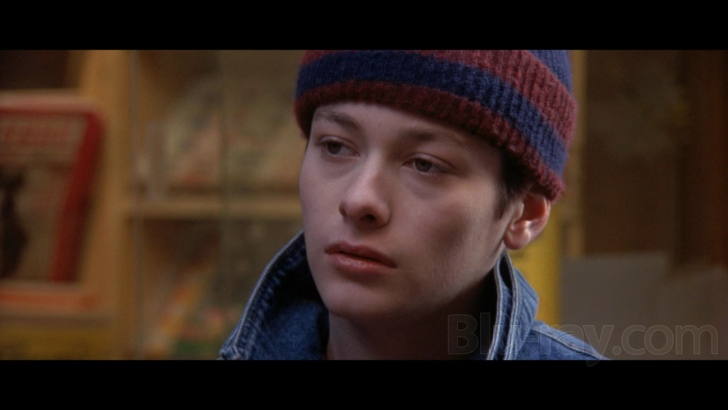
Metro Films has supplied an English DTS-HD Master Audio 5.1 Surround remix (1890 kbps, 16-bit) and a dubbed French DTS-HD Master Audio 5.1 track (2048 kbps, 16-bit), the latter of which is the primary track on the disc. Little Odessa's theatrical presentation featured a "Spectral Recording" of a Dolby Stereo 2.0 mix. The English 5.1 track here is very front heavy. The most discrete separation occurs along the front and rear channels during the subway scene and the clack-clack sound of a train rolling. The dialogue is mostly spoken in English. There's some Russian, too, and Gray has chosen when to subtitle it. Screenshots 23-25 show the English subs, which were embedded into the cinema prints. Some bits of dialogue in Russian are even translated into English by the characters. Spoken words are often murmured and whispered, which can be difficult to decipher unless you have the volume cranked up on the receiver. This was intentional by Gray because it was also present on the release prints. One critic whose review I read called the dialect "inarticulable." The Minneapolis-based Star Tribune's Jeff Strickler cited the characters' "clipped sentences" at a screening he attended. This was done on purpose by Gray because he wanted to recreate the realism of broken English, which is supposedly part of the street vernacular of Russian-Jewish émigrés he studied in this urban community of New York.
For the music, Gray chose a collection of haunting and soulful chorales and arias performed by a Russian chorus and chamber choir. They blend in beautifully with the film's morbid characters and elegiac themes.
Little Odessa Blu-ray Movie, Special Features and Extras 
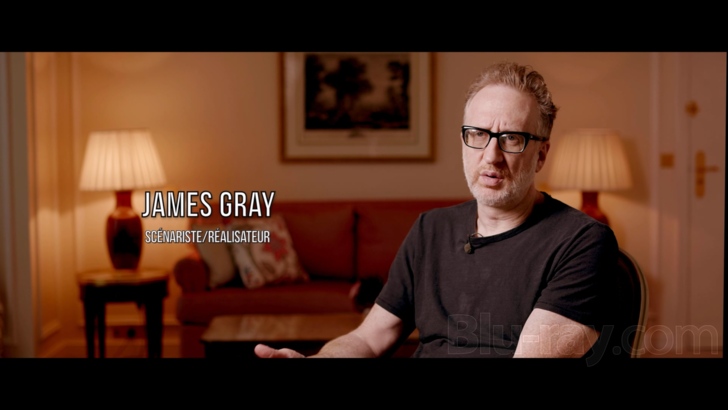
The 2000 Pioneer Special Edition DVD of Little Odessa included an excellent feature-length commentary with James Gray interleaved with occasional remarks by Tim Roth, who was recorded separately from Gray. There's also a brief "Film to Storyboard Comparison" slide show (with director's commentary) displaying watercolors Gray painted before he and his crew began filming. These are followed by the completed film's compositions. A "Production Photo Gallery" consists of fifty color and black-and-white stills from Little Odessa's shoot. Metropolitan apparently did not license any of these, but the label has produced a new interview.
- NEW Blood Ties: James Gray, about LITTLE ODESSA (27:26, 1080p) - This recent interview with Gray was recorded after the director completed work on Armageddon Time. Gray recounts the impressions he had of himself while filming Little Odessa, which he contrasts with his initial reaction after viewing the assembly cut in the editing room. He discusses the importance of New York as a place and space to his filmmaking roots. Gray shares various insights and anecdotes about making the movie. He reminisces about DP Tom Richmond and the visual inspirations for Little Odessa, including German artist Max Beckmann and other painters Gray and Richmond studied at one of the local museums. Gray also talks about working with Roth, Schell, and Furlong while making the picture. Gray speaks in English; his remarks are accompanied by imposed French subtitles, which contain a typographical error when translating a name.
Little Odessa Blu-ray Movie, Overall Score and Recommendation 
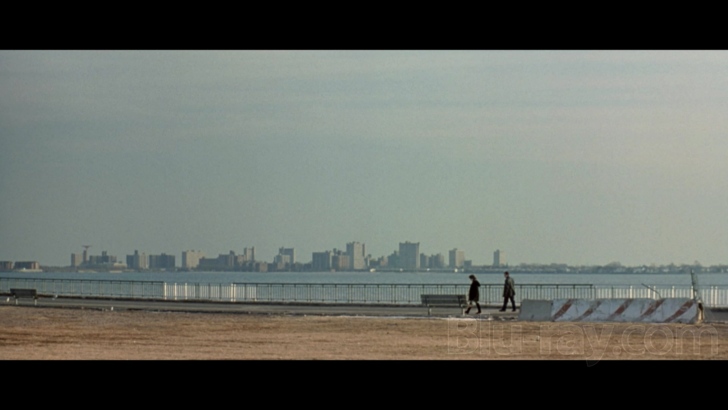
James Gray's terrific debut feature is finally available on Blu-ray, which boasts a very fine restoration purportedly done in France. I only wish that Metropolitan Film & Video had used better compression with a considerably higher bitrate for the feature. The lone extra is a recent interview with Gray that covers quite a few topics in just under a half hour. Little Odessa comes HIGHLY RECOMMENDED. Metro's disc earns a SOLID RECOMMENDATION. Gray's movies are very popular in France and I urge everyone, no matter where you reside, to purchase a copy. Please note that this is a Region B-encoded disc so ensure that your player meets compatibility requirements.
Similar titles
Similar titles you might also like
(Still not reliable for this title)

Revenge of the Green Dragons
La revanche des dragons verts
2014

Shinjuku Incident
San suk si gin
2009

Violent City
Città violenta / La Cité de la violence
1970

Easy Money
L'argent Facile / Snabba Cash
2010

Branded to Kill
殺しの烙印 / Koroshi no rakuin | La Marque du tueur | Cinema Master Class
1967

The Mechanic
Le Flingueur / Édition Collector / Livret +
1972

The Hit
Edition Collector Limitée
1984

The Funeral
Nos Funérailles
1996

Charley Varrick
Tuez Charley Varrick!
1973

Gloria
Édition Collector
1980

Minari
2020

Ghost Dog: the Way of the Samurai
Ghost Dog, la voie du samouraï
1999

The Third Murder
三度目の殺人(Sandome no Satsujin
2017

Code inconnu
Code Unknown
2000

A Bittersweet Life 4K
2005

La Dolce Vita
1960

Pusher - La trilogie 4K
1996

Suburra
2015

Gomorra - La série: Saison 5
2021

Garde à vue
The Grilling
1981

